#quartets 1964 ghosts to spirits
Text
Albert Ayler - Quartets 1964: Spirits to Ghosts Revisited (Ezz-thetic)

youtube
Once the bane or boon of music collectors depending on where they found themselves regarding ownership of a given album, the signifier “out of print” no longer holds much weight or consequence. Thank the vast levelling access of the internet for that nullification of scarcity and the good, bad, and ugly that comes with it. But for those who still covet and delight in the tactile and ocular pleasures of a physical recorded object in the context of pioneering free jazz, Quartets 1964: Spirits to Ghosts Revisited will likely prove appealing both in terms of content and presentation.
Saxophonist Albert Ayler was advancing another sea change in his music when he recorded the two studio dates included on the disc. Seven months separated the New York City sessions and across that temporal distance, Ayler solidified a working band that would become arguably his most iconic. The music was released under different titles in the ensuing years with Witches and Devils an alternate identifier for Spirits and Vibrations replacing Ghosts on occasion, but the evolutionary differences in organized sound still evident between them.
Ayler assembled bands for both that allowed him to jettison earlier and awkward adherences to jazz standard conventions made to accommodate convention-minded sidemen and focus instead on his own compositions. Spirits explores longer improvisational forms over four pieces with drummer Sunny Murray and bassist Henry Grimes slotting ably and enthusiastically into Ayler’s raucous theme-to-freedom frameworks. Trumpeter Norman Howard and bassist Earle Henderson fare less well by comparison. The former often resorts to abrasive scalar trills while the latter resorts at times to leaden thrums but each recoups in avidity what he might lack in facility.
Ghosts benefits from better sound and augments a core trio of Murray and bassist Gary Peacock who took part in Ayler’s seminal Spiritual Unity session that summer by adding trumpeter Don Cherry. The launching themes are still elemental and protean in feel and intensity, but the resulting polyphonic barrages don’t show their seams as easily. Murray and Peacock are often a blur of concerted motion with Ayler and Cherry injecting grain and texture into their galvanizing horn bursts that are by turns jarring and beautiful.
Aside from the convenience of bundling the sessions in a single package and a typically astute accompanying essay from Ayler expert Art Lange the release has other aspects to recommend it. Full licensure by the Ayler Estate for the contents means the proper parties are being compensated. Engineer Peter Pfister, like Lange a mainstay for project producer Werner X. Uehlinger, cleans up the recordings considerably with a fresh remaster completed this past summer. Seventy-plus minutes of Ayler is an investment, but nearly fifty-five years later there’s still nothing exactly like it.
Derek Taylor
#albert ayler#quartets 1964 ghosts to spirits#ezz-thetics#hat hut#don cherry#gary peacock#sunny murray#free jazz#dusted magazine#albumreview#derek taylor
1 note
·
View note
Text
Florence Price

Florence Beatrice Price (née Smith; April 9, 1887 – June 3, 1953) was an African-American classical composer, pianist, organist and music teacher. Price is noted as the first African-American woman to be recognized as a symphonic composer, and the first to have a composition played by a major orchestra.
Biography
Early Life
She was born as Florence Beatrice Smith to Florence (Gulliver) and James H. Smith on April 9, 1887, in Little Rock, Arkansas, one of three children in a mixed-race family. Despite racial issues of the era, her family was well respected and did well within their community. Her father was a dentist and her mother was a music teacher who guided Florence's early musical training. She had her first piano performance at the age of four and had her first composition published at the age of 11.
By the time she was 14, Florence had graduated as valedictorian of her class. After high school, she later enrolled in the New England Conservatory of Music in Boston, Massachusetts with a major in piano and organ. Initially, she identified as Mexican to avoid the prejudice people had toward African Americans at the time. At the Conservatory, she studied composition and counterpoint with composers George Chadwick and Frederick Converse. Also while there, Smith wrote her first string trio and symphony. She graduated in 1906 with honors, and with both an artist diploma in organ and a teaching certificate.
Career
Smith returned to Arkansas, where she taught briefly before moving to Atlanta, Georgia, in 1910. There she became the head of the music department of what is now Clark Atlanta University, a historically black college. In 1912, she married Thomas J. Price, a lawyer. She moved back to Little Rock, Arkansas, where he had his practice. After a series of racial incidents in Little Rock, particularly a lynching of a black man in 1927, the Price family decided to leave. Like many black families living in the Deep South, they moved north in the Great Migration to escape Jim Crow conditions, and settled in Chicago, a major industrial city.
There Florence Price began a new and fulfilling period in her composition career. She studied composition, orchestration, and organ with the leading teachers in the city, including Arthur Olaf Andersen, Carl Busch, Wesley La Violette, and Leo Sowerby. She published four pieces for piano in 1928. While in Chicago, Price was at various times enrolled at the Chicago Musical College, Chicago Teacher’s College, University of Chicago, and American Conservatory of Music, studying languages and liberal arts subjects as well as music. Financial struggles and abuse by her husband resulted in Price getting a divorce in 1931. She became a single mother to her two daughters. To make ends meet, she worked as an organist for silent film screenings and composed songs for radio ads under a pen name. During this time, Price lived with friends. She eventually moved in with her student and friend, Margaret Bonds, also a black pianist and composer. This friendship connected Price with writer Langston Hughes and contralto Marian Anderson, both prominent figures in the art world who aided in Price's future success as a composer.
Together, Price and Bonds began to achieve national recognition for their compositions and performances. In 1932, both Price and Bonds submitted compositions for the Wanamaker Foundation Awards. Price won first prize with her Symphony in E minor, and third for her Piano Sonata, earning her a $500 prize. (Bonds came in first place in the song category, with a song entitled "Sea Ghost.") The Chicago Symphony Orchestra, conducted by Frederick Stock, premiered the Symphony on June 15, 1933, making Price’s piece the first composition by an African-American woman to be played by a major orchestra.
A number of Price's other orchestral works were played by the WPA Symphony Orchestra of Detroit, the Chicago Women’s Symphony, and the Women's Symphony Orchestra of Chicago. Price wrote other extended works for orchestra, chamber works, art songs, works for violin, organ anthems, piano pieces, spiritual arrangements, four symphonies, three piano concertos, and a violin concerto. Some of her more popular works are: "Three Little Negro Dances," "Songs to a Dark Virgin", "My Soul's Been Anchored in the Lord" for piano or orchestra and voice, and "Moon Bridge". Price made considerable use of characteristic African-American melodies and rhythms in many of her works. Her Concert Overture on Negro Spirituals, Symphony in E minor, and Negro Folksongs in Counterpoint for string quartet, all serve as excellent examples of her idiomatic work. Price was inducted into the American Society of Composers, Authors, and Publishers in 1940 for her work as a composer. In 1949, Price published two of her spiritual arrangements, "I Am Bound for the Kingdom," and "I'm Workin’ on My Buildin'", and dedicated them to Marian Anderson, who performed them on a regular basis.
Personal life and death
In 1912, Price married attorney Thomas J. Price upon returning to Arkansas from Atlanta. Together, they had two daughters and a son; Florence (d. 1975), Edith and Thomas Jr. The Price children were raised in Chicago. Florence Price divorced Thomas Price in January 1931, and on February 14, 1931, she married the widower Pusey Dell Arnett (1875-1957), an insurance agent and former baseball player for the Chicago Unions some thirteen years her senior. She and Arnett were separated by April 1934; they apparently never divorced. On June 3, 1953, Price died from a stroke in Chicago, Illinois, at age 66.
Rediscovery of works
Following her death, much of her work was overshadowed as new musical styles emerged that fit the changing tastes of modern society. Some of her work was lost, but as more African-American and female composers have gained attention for their works, so has Price. In 2001, the Women's Philharmonic created an album of some of her work. Pianist Karen Walwyn and The New Black Repertory Ensemble performed Price's Concerto in One Movement and Symphony in E minor in December 2011.
In 2009, a substantial collection of her works and papers were found in an abandoned dilapidated house on the outskirts of St. Anne, Illinois. These consisted of dozens of her scores, including her two violin concertos and her fourth symphony. As Alex Ross stated in The New Yorker in February 2018, "not only did Price fail to enter the canon; a large quantity of her music came perilously close to obliteration. That run-down house in St. Anne is a potent symbol of how a country can forget its cultural history."
In November 2018, the New York-based firm of G. Schirmer announced that it had acquired the exclusive worldwide rights to Florence Price's complete catalog.
Composition style
Even though her training was steeped in European tradition, Price's music consists of mostly the American idiom and reveals her Southern roots. She wrote with a vernacular style, using sounds and ideas that fit the reality of urban society. Being deeply religious, she frequently used the music of the African-American church as material for her arrangements. At the urging of her mentor George Whitefield Chadwick, Price began to incorporate elements of African-American spirituals, emphasizing the rhythm and syncopation of the spirituals rather than just using the text. Her melodies were blues-inspired and mixed with more traditional, European Romantic techniques. The weaving of tradition and modernism reflected the way life was for African Americans in large cities at the time.
Legacy and honors
In 1964, the Chicago Public Schools opened Florence B. Price Elementary School (also known Price Lit & Writing Elementary School) at 4351 South Drexel Boulevard in the North Kenwood neighborhood of Chicago, Illinois in her honor. Price student body was predominately African-American. The school operated from 1964 until the school district decided to phase it out in 2011 due to poor academic performance which ultimately led to its closing in 2013. The school housed a piano owned by Price. The school building currently houses a local church as of 2019. In February 2019, The University of Arkansas Honors College held a concert honoring Price. In October 2019, the International Florence Price Festival announced that its inaugural gathering celebrating Price's music and legacy would take place at the University of Maryland School of Music in August 2020.
Works
Symphonies
Symphony No. 1 in E minor (1931–32); First Prize in the Rodman Wanamaker Competition, 1932
Symphony No. 2 in G minor (c. 1935)
Symphony No. 3 in C minor (1938–40)
Symphony No. 4 in D minor (1945)
Concertos
Piano Concerto in D minor (1932–34); often referred to as Piano Concerto in One Movement although the work is in three separate movements
Violin Concerto No. 1 in D major (1939)
Violin Concerto No. 2 in D minor (1952)
Rhapsody/Fantasie for piano and orchestra (date unknown, possibly incomplete)
Other orchestral works
Ethiopia's Shadow in America (1929–32)
Mississippi River Suite (1934); although labelled as a "suite", the work is cast in one continuous large-scale movement, in which several famous Mississippi River Songs are quoted, such as “Get Down, Moses”, “Nobody Knows the Trouble I’ve Seen” and "Deep River".
Chicago Suite (date unknown)
Colonial Dance Symphony (date unknown)
Concert Overture No. 1 (date unknown); based on the spiritual "Sinner, Please Don’t Let This Harvest Pass"
Concert Overture No. 2 (1943); based on three spirituals ("Go Down Moses", "Ev'ry Time I Feel the Spirit", "Nobody Knows the Trouble I've Seen")
The Oak, tone poem (1943); sometimes referred to as Songs of the Oak
Suite of Negro Dances (performed in 1951; orchestral version of the Three Little Negro Dances for piano, 1933;); also referred to as Suite of Dances
Dances in the Canebrakes (orchestral version of the homonymous piano work, 1953)
ChoralSolo vocal (all with piano)Instrumental Chamber Music
Andante con espressione (1929)
String Quartet (No. 1) in G major (1929)
Fantasie [No. 1] in G Minor for Violin and Piano (1933)
String Quartet (No. 2) in A minor (published in 1935)
Fantasy [No. 2] in F-sharp Minor for Violin and Piano (1940)
Piano Quintet in E minor (1936)
Piano Quintet in A minor
Five Folksongs in Counterpoint for String Quartet
Suite (Octet) for Brasses and Piano (1930)
Fantasy [No. 2] in F-sharp Minor for Violin and Piano (1940)
Moods, for Flute, Clarinet and Piano (1953)
Spring Journey, for 2 violins, viola, cello, double bass and piano
Various pieces for violin and piano
Works for pianoArrangements of spirituals
"My soul's been anchored in de Lord", 1v, pf (1937), arr. 1v, orch, arr. chorus, pf;
"Nobody knows the trouble I see", pf (1938);
"Some o' These Days," 1v, pf
"Were you there when they crucified my Lord?", pf (1942);
"I am bound for the kingdom", 1v, pf (1948);
"I'm workin' on my building", 1v, pf job at Florida
"Heav'n bound soldier", male chorus, 1949 [2 arrs.];
Undated:
"Joshua Fit de Battle of Jericho" (ca. 1950)
"Peter, Go Ring dem Bells," ed. John Michael Cooper (New York: G. Schirmer, 2019)
* "Variations on a Folksong (Peter, go ring dem bells)", org (1996);
"I couldn't hear nobody pray", SSAATTBB;
"Save me, Lord, save me", 1v, pf;
"Trouble done come my way", 1v, pf;
?12 other works, 1v, pf
MSS of 40 songs in US-PHu; other MSS in private collections; papers and duplicate MSS in U. of Arkansas, Florida
===Works for Organ=== (supplied by Calvert Johnson)
Adoration in The Organ Portfolio vol. 15/86 (Dec. 1951), Dayton OH: Lorenz Publishing Co., 34–35.
Andante, July 24, 1952
Andantino
Allegretto
Cantilena March 10, 1951
Caprice
Dainty Lass, by November 19, 1936
The Hour Glass [formerly Sandman]. Paired with Retrospection as No. 1
Hour of Peace or Hour of Contentment or Gentle Heart, November 16, 1951
In Quiet Mood [formerly Evening and then Impromptu]. New York: Galaxy Music Corp, 1951 (dated Aug. 7, 1941)
Little Melody
Little Pastorale
Offertory in The Organ Portfolio vol. 17/130 (1953). Dayton OH: Lorenz Publishing Co., 1953
Passacaglia and Fugue, January, 1927
A Pleasant Thought, December 10, 1951
Prelude and Fantasie, by 1942
Retrospection [formerly An Elf on a Moonbeam]. Paired with The Hour Glass as No. 2
Steal Away to Jesus, by November 19, 1936
Suite No. 1, by April 6, 1942
Memory Mist (1949)
Tempo moderato [no title], seriously damaged and possibly incomplete]
Variations on a Folksong
Principal publishers: Fischer, Gamble-Hinged, Handy, McKinley, Presser
Discography
Art Songs by American Composers / Yolanda Marcoulescou-Stern. Gasparo Records, 1993.
Black Diamonds/ Althea Waites. Cambria Records, 1993.
Florence Price: The Oak, Mississippi River Suite, and Symphony No. 3 / Women’s Philharmonic. Koch International Classics, 2001. Reprinted 2008.
Lucille Field Sings Songs by American Women Composers. Cambria Records, 2006.
Negro Speaks of Rivers / Odekhiren Amaize, David Korevaar. Musician’s Showcase, 2000.
Chicago Renaissance Woman: Florence B. Price Organ Works; Calcante CAL 014 1997
Florence B. Price: Concerto in One Movement and Symphony in E minor; Albany TROY1295, 2011.
Florence B. Price: Violin Concertos Nos. 1 (D major - 1939) and 2 (D minor - 1952) / Er-Gene Kahng, Janacek Philharmonic, Ryan Cockerham. Albany TROY1706, 2018.
Florence B. Price: Symphonies Nos. 1 (E minor - 1932) and 4 (D minor - 1945) / Fort Smith Symphony, John Jeter. Naxos American Classics, 2018.
Florence B. Price: Dances in the Canebrakes (Nimble Feet / Tropical Noon / Silk Hat and Walking Cane) / Chicago Sinfonietta, Mei-Ann Chen. Album Project W - Works by Woman Composers. Cedille Records, 2019.
Beyond the Traveler: Piano Music by Composers from Arkansas (Sonata in E minor) / Cole Burger, piano. MSR Classics, 2019.
4 notes
·
View notes
Text
Albert Ayler Quartets 1964 - Spirits To Ghosts Revisited (ezz-thetics, 2019) ****(*)
Albert Ayler Quartets 1964 - Spirits To Ghosts Revisited (ezz-thetics, 2019) ****(*)
[ad_1]
By Colin Green
1964 has been described as Albert Ayler’s annus mirabilis, the year in which his music reached maturity and he found his true voice. Arguably, he never attained the same heights or levels of cohesion so consistently thereafter. The album under review, part of the Revisited series on Hat Hut’s ezz-thetics imprint, allows us to sample his music towards the…
View On WordPress
0 notes
Text
Derek Taylor 2019: Keep Going
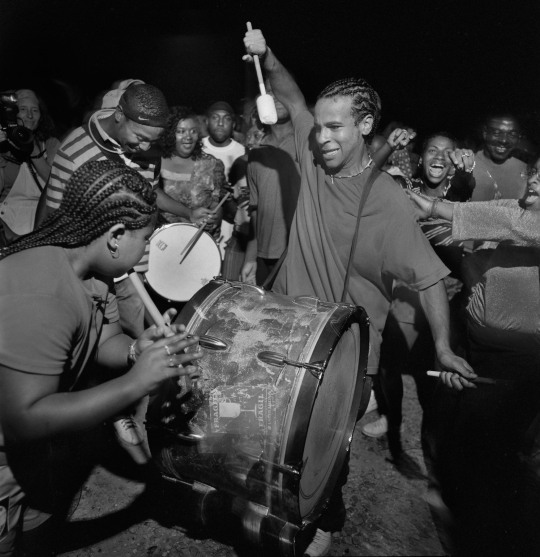
Two words coupled by Harriet Tubman and coined into a credo essential for negotiating the human condition. It's also the title of and invocation to a sublime duo album by Joe McPhee and Hamid Drake released this year as rejoinder to their first recorded ten-years earlier. Taking stock of that decade is something we at Dusted did recently and as the New Year arrives it’s an exercise that feels all the more important, particularly in the extra-musical sense of recognizing the folly of where we’ve been as a world and where we really want to go moving forward. As always, music is both balm and adhesive in remembering that no matter how divisive and discouraging everything seems, we’re still all in it together.
Joe McPhee
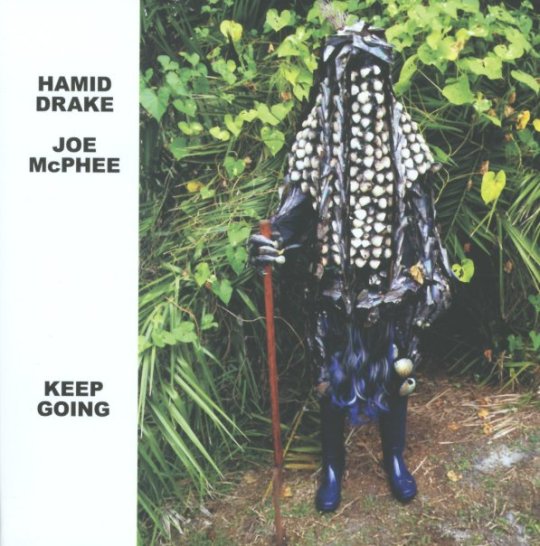
Seventy-nine-years young and still a human dynamo of energy, empathy, and optimism, the Powerhouse from Poughkeepsie’s been a constant of these retrospective essays for as long as I’ve been writing them. I haven’t done a hard count, but his horns grace at least a dozen releases this year. Duos with Mats Gustaffson (Brace for Impact), Fred Lonberg-Holm (No Time Left for Sadness), and Paal Nilssen-Love (Song for the Big Chief) join the dyad denoted above in delivering dialogues as personal as they are potent. Tree Dancing assembles the super-group of Lol Coxhill, Evan Parker, Chris Corsano, and McPhee collectively and in component combinations with bassist John Edwards on board for a culminating cut, while Six Situations realizes a dream of bassist Damon Smith in teaming him with McPhee’s tenor and now dearly departed drummer Alvin Fielder. The Fire Each Time bundles six concerts of McPhee in the company of the DKV Trio from a 2017 tour that took James Baldwin and John Coltrane as lodestones. Saving perhaps the best for last, Invitation to a Dream comingles McPhee’s pocket trumpet and soprano with pedal steel guitarist Susan Alcorn and old confrere Ken Vandermark in a tripart colloquy delivered in crystal clear sound.
Peter Brötzmann

A year younger and another fixture in my yearly firmament, Herr Brötz has always had ears attuned to the early pioneers of improvised music through the unabashed embrace of Sidney Bechet, Coleman Hawkins, and others. Those unerring affections erode some of the surprise from I Surrender Dear, an album of tenor-rendered jazz standards and originals, but also enhance the overall experience in how literally he makes good on the debt. It’s arguably his best solo album since 14 Love Poems and bolstered further by the focus on a single central member of his reed arsenal. Also of note, Fifty Years After commemorating the golden anniversary of Machine Gun with longtime confreres German pianist Alexander von Schlippenbach and Dutch drummer Han Bennink,
Rob Franken Electrification — Functional Stereo Music (678 Records)

Four-hours of Fender Rhodes heaven recorded in elite Dutch studios between 1972 and 1981 that puzzlingly never found commercial circulation until last year as a six-LP series. The 2019 edition transfers the archive to three-CDs and only rarely flags as Franken’s fonky keys front guitar, bass, drums and a revolving cast of fellow aces fielding other instruments. Economy is the informal edict as morsel-sized originals alternate with covers of tunes by Herbie Hancock, Stevie Wonder, Atilla Zoller, and even Steely Dan. The utilitarian intimations of the title aren’t just lip service. Franken originally envisioned the music as an homage to the muzak strains common to “shopping malls, hotels, elevators, department stores, and airports.” Much of it sounds far better aligned with the kinetic cop and detective pot-boilers that populated television and cinema of the decade.
Brian Groder Trio – Luminous Arcs (Latham)

Keeping a working improvising ensemble together is no minor accomplishment, yet Groder’s been able to maintain one in his name with bassist Michael Bisio and drummer Jay Rosen. This disc joins two previous albums in demonstrating both the depth of the musicians’ bonds and their shared zeal in exploring and capitalizing on them. Any novelty surrounding the particulars of a trumpet-led piano-less trio is fortunately long since lapsed. The precedence allows them to marshal their attention to shaping music that is simultaneously the sum and multiplication of the substantial parts.
V/A — Pakistan: Folk and Pop Instrumentals 1966-1976 (Sublime Frequencies)

Seattle-based Sublime Frequencies weathered a stretch where the “weirdness” quotient of their audio excavations appeared to outweigh accompanying scholarship and attention to edifying annotations. This scintillating compilation suffers no such skew in the balance of carefully sourced sounds and accompanying copy to shore up the context. Sixties rock, specifically surf, is a through-line in the preponderance of reverb-riddled guitars and buzzing Farfisa organ on many of the tracks, but indigenous melodies and rhythms are also frequent fodder for enthusiastic appropriation. Best of all, there’s a pervasive sense of fun to the sequencing that makes it a handy soundtrack for soirees of all sorts.
Jaimie Branch — Fly or Die II (International Anthem)

If her ascendant flight pattern is any indication, death, artistic or otherwise, isn’t even an option for Jaimie Branch. This follow-up to her meteoric (and long overdue) 2017 debut builds organically on previous cosmetic aspects (core quartet, cover art, etc.) while making progressive-pronged politics even more prominent. “Prayer for Amerikkka” doesn’t mince words in proffering a platform of resistance and the musical propellant to keep it confidently airborne. A robust touring schedule and well-earned media attention are only furthering Branch’s designs at getting the sounds into as many ears as possible.
Sam Rivers

The Sam Rivers Archive Series is the brainchild of producers Danas Mikailionis and Ed Hazell. A projected eight-volume celebration of the music of the eponymous composer/improviser/educator/doyen curated from a vast trove left in the care of Rivers’ daughter after his passing in 2011, it’s also probably the jazz news that most set my heart aflutter with anticipation this year. The initial pair of entries, Emanation and Zenith, certainly live up to the promise in presenting clean fidelity concerts by a high profile trio with bassist Cecil McBee and drummer Norman Conners (pre-disco) and a workshop quintet involving tubaist Joe Daley, bassist Dave Holland and the eight-limbed drums juggernaut of Barry Altschul and Charlie Persip. Both discs are essential.
Jimi Hendrix — Songs for Groovy Children (Experience Hendrix)

Not a long-lost Hendrix kids’ album despite what the jejune title might suggest. Instead, it’s four nearly complete concerts from the guitar deity’s iconic New Year’s Band of Gypsies engagement at the Fillmore East in 1969/70. Producer Eddie Kramer largely quashes his invasive impulses in mastering the tapes, leaving the only real minuses to manifest in the occasionally extra-loose interplay and Jimi’s decision to indulge Buddy Miles’ mic access to a regrettably arguable fault. Math done, there’s nothing stopping an instant trigger-pull for true believers, even folks who have it all already in bootleg form.
Ezz-thetics
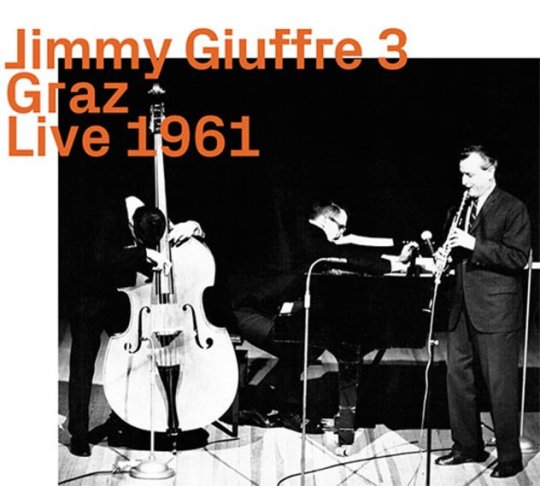
Fingers remain collectively-crossed that Werner X. Uehlingher will one day decide to write an autobiography of his countless adventures as a stalwart producer of improvised music. Ezz-thetics is just the latest chapter in the future tome’s story arc that started with the founding of the Hat Hut label back in 1974. The new imprint, named after a classic George Russell composition, balances reissue and archival releases with new ones, packing them with branding that memorializes the old while consecrating the new. Discs by Jimmy Giuffre (Graz Live 1961), John Coltrane (Impressions Graz 1962), and Albert Ayler (Quartets 1964 Spirits to Ghosts Revisted) are the marquee name highlights, but the entirety of the imprint’s releases to-date have had their merits.
Stephen Riley

The tenorist is no longer my favorite under-forty plier on the instrument simply because he’s aged out of the bracket. Oleo builds on last year’s transparently veiled Sonny Rollins’ tribute Hold ‘Em Joe by adding the sturdy trumpet of Joe Magnarelli to the equation and turning the referential calendar forward to the saxophone colossus’ collaborations with Don Cherry. It’s a beaut from a brisk beginning sortie on “Ornithology” to lengthy slalom on the Ducal “Don’t Get Around Much Anymore.” Tangerine Rhapsody is technically under Dutch drummer Snorre Kirk’s leadership, but it wouldn’t be nearly the album it is absent Riley’s supple and sagacious involvement.
Milt Buckner & Jo Jones — Buck & Jo (Fremeaux & Associates)

Curious about what makes an individual improviser tick? Duo contexts are arguably the best aperture to gain edification and insight. Even better than solo or ensemble configurations, the dyad distills things down to solo and dialogue. This four-disc, four-hour-plus collection is a remarkable case in point and surprise that it even exists at all given its vintage let alone its scope. Thank French impresarios the Panassie Brothers who invited ur swing organist and ur swing drummer to indulge themselves with only the gentlest of producer-dictated strictures. The results are fascinating, whimsical, bombastic, and above all, endlessly entertaining. An epitome of intimately undertaken jazz tête-à-tête before it was anything resembling a regular thing.
Del Shannon — Two Silhouettes (Bear Family)
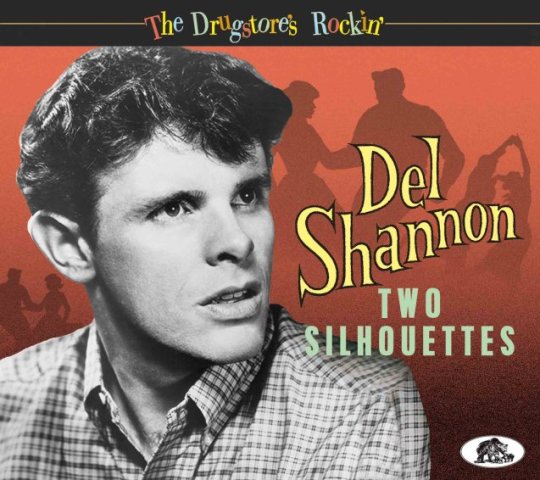
Preconceptions can prove obdurate edifices. Prior to my forty-eighth birthday this year I dismissed Del Shannon as one of the disposable princes of bubble gum pop on the rare occasions he entered my consciousness at all. “Runaway” remains an influential song, particularly in its use of musitron organ, but it’s hardly the makings of unassailable genius. Bear Family’s exhaustive single-disc survey levies a much more convincing appeal for the crooner’s embodiment of a nexus of odd congruencies as moonlighting jazzmen conspire with duck-tailed rockers and barbershop harmonists. Dennis Coffey and Hargus “Pig” Robbins show up as sidemen and there’s even an S&M-tinged canticle called “Torture” replete with whip cracks and a Greek chorus of moans, leaving one to wonder what Ward and June Cleaver made of it all?
Sun Ra
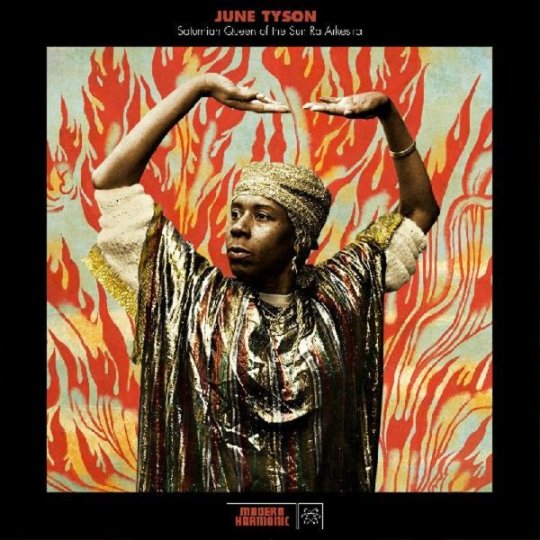
Cosmic Myth and Modern Harmonic continue to advance the mantle apparently abandoned by the Art Yard label in keeping Ra-related albums in circulation. The erstwhile Mr. Mystery employed numerous vocalists throughout his career, even contributing his own less-than-stellar (pun intended) pipes to the cause on occasion. None among that eclectic number could match June Tyson, who brought joie de vivre to the lyrical manifestations of Ra’s cosmic-afro-centrism that was at once wholly believable and infectious. Saturnian Queen of the Sun Ra Arkestra does right by her memory by culling an hour’s worth of highlights from a vast and varied recorded archive. Monorails & Satellites (now in three volumes!) and newly minted editions of Pathways to Unknown Worlds and When Angels Speak of Love were also welcome arrivals.
Derek Bailey/Han Bennink/Evan Parker — Topographie Parisienne: Dunois, April 3rd, 1981 (Fou)
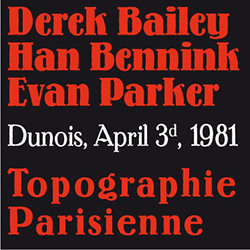
The Topography of the Lungs trio in concert and at length with decent sound eleven-years after their initial seismic contributions to free improv. Bailey and Parker weren’t yet at irreconcilable loggerheads but there’s still a galvanizing and palpable tension that suffuses their interplay. Bennink can’t help being anything but Bennink, bashing away one moment and pattering at barely a whisper the next while keeping ears cocked with split-second focus to the contributions his compatriots. Duos combine with solos from Parker sweeten and season an already delicious aural pot.
Fred Anderson Quartet — Live at the Velvet Lounge Volume V (FPE)
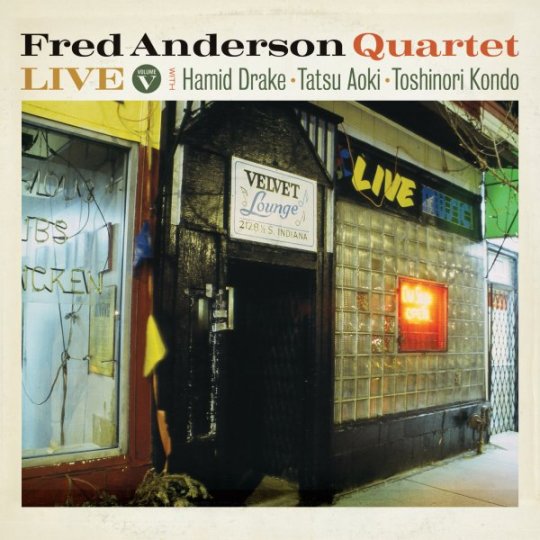
Leftfield guest Toshinori Kondo and drummer Hamid Drake were one half of Peter Brötzmann’s Die Like a Dog outfit when this 1994 concert was committed to tape. That take-no-prisoners context allowed his plangent, frenetic, effects-saturated brass free and ferocious rein. Anderson’s outlets didn’t usually involve electronics and its instructive hearing the adaptations to the roiling controlled-chaos within his customary cerulean-hued improvisations. Drake and bassist Tastu Aoki maintain a stout terrestrial tether enlivened by a revolving array of undulating grooves. Extra points earned for incorporating the original Velvet Lounge wallpaper scheme into the production design. Bottom line: I miss Fred.
V/A — Hillbillies in Hell: Tribulations: Country Music’s Tormented Testament (1952-1974) (The Omni Recording Corporation)

Amusing alliterative appellation aside, this series has managed the no-meager-feat of avoiding diminishing returns while mining the same expanse of time over successive volumes. The fifth entry tilts the lens even more sharply toward the sort of fervent tent show revival circuit favored by fictional religious reprobates like Rev. Harry Powell and Elmer Gantry and comes up with a bonanza off-kilter cuts from names both famous (Hank Williams, Louvin Bros., Tex Ritter) and arcane (The Burton Family, Durwood Daily, The Sunshine Boys Quartet). Ernest Tubb’s “Saturday Satan, Sunday Saint” persuasively sums up the ecumenical ethos, but every song exudes its share of sinful charms.
V/A — Sacred Sounds: Dave Hamilton’s Raw Detroit Gospel (Ace)

As a both prolific and preternaturally talented producer, Dave Hamilton’s usual purview was left-of-center soul and funk. Urban (but not urbane) gospel offered a less-publicized commercial side outlet and he brought comparable emphasis on authenticity and creativity to the various acts he championed. This compilation comprises all-killer-no-filler assemblage that lives up to the unvarnished signifier in the title. It’s nearly eighty-minutes of jangly guitars, tambourines, and impassioned sanctifying and proselytizing of all sorts, as suited for Sunday morning as Friday or Saturday night depending on the preferred mood of your personal household. I’ve enjoyed equal fun plying it in both.
Art Pepper — Promise Kept

Laurie Pepper, like Sue Mingus and other jazz widows before her, remains a passionate arbiter and steward of her late husband’s recorded legacy. The title of this box set collecting a singular tributary of Art Pepper’s later career aspirations could just as easily serve as a signifier of that bond. In truth, it’s reflective of a pact the couple made with producer John Snyder and a string of studio sessions largely left unissued during the Pepper’s lifetime. Rivalries real and imagined are revealed across the recordings as the altoist wrestles with his insecurities and the realities of choices made and paid for as a consequence of his addictions and fictions. Straightforward and vital, the music avoids gestalt in remaining consistently strong and emotionally true.
Paul Bley/Gary Peacock/Paul Motian — When Will the Blues Leave (ECM)

The prevailing mystery behind this twenty-year-old concert rests on the reason(s) why the fine folks at ECM left it in the can for so long. I don’t have an answer but rather a simple expression of gratitude that they finally decided to rectify the error and get the sounds out into the world. Bley, Peacock and Motian were already three-decades deep in the periodic associations that quietly helped open chamber jazz to free improvisation when they took to the Swiss stage. The ensuing masterful performance manages to feel simultaneously like three old friends shooting the shit and a trio of improvisatory experts operating at peak collective capacity.
Prince — 1999 (Warner)
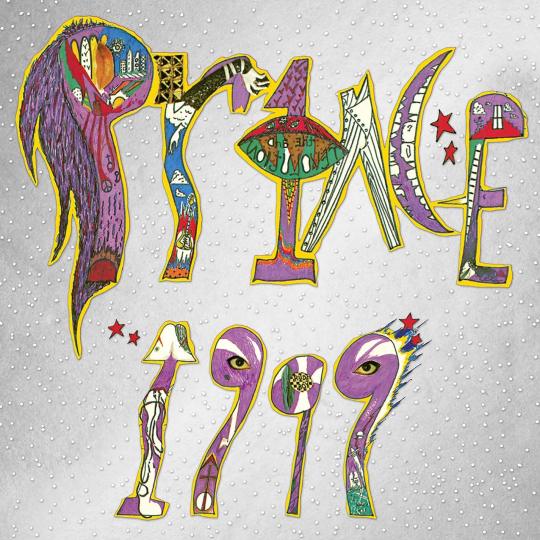
Residency in the Twin Cities for the better part of two decades has resulted in many boons, personal and vocational for this writer. As with any life lived, the red side of the ledger has entries, too. Folded among them is the frictional, frayed listening relationship I harbor with the region’s most famous musical export. Nearly three years after his premature passing Prince is still everywhere and everything here. That perpetual, and perpetually irksome, ubiquity is what makes this five-disc+DVD beyond-exhaustive box so refreshing to my patience-tested purview. It contains lots of impressive material from arguably his most creative and questing period. It also has plenty of songs that feel competent but quotidian by comparison. That blend of bliss and banality is as effective a corrective as I can think of to the cult of purple sainthood that persists around these parts.
And as is my habitual wont, 25 more in no hierarchical order… thank you for reading and Feliz Año Nuevo!
Josh Abrams Natural Information Society (Eremite)
Michael Formanek’s Very Practical Trio – Even Better (Intakt)
Charles Gayle/John Edwards/Mark Sanders – Seasons Changing (Otokroku)
Dudu Pukwana/Han Bennink/Misha Mengelberg – Yi Yole (ICP/Corbett vs. Dempsey)
Nat King Cole – Hittin’ the Ramp: The Early Years (1936-1945) (Resonance)
Willem Breuker & Han Bennink – New Acoustic Swing Duo (ICP/Corbett vs. Dempsey)
Whit Dickey & Kirk Knuffke – Drone Dream (No Business)
Mark Turner & Gary Foster – Mark Turner Meets Gary Foster (Capri)
J.C. Heard & Bill Perkins Quintet – Live at the Lighthouse 1964 (Fresh Sound)
Stan Getz – Getz at the Gate: November 26, 1961 (Verve)
Rita Moss - Queen Moss 1951-1959 (Fresh Sound)
Bill Frisell & Thomas Morgan – Epistrophy (ECM)
Marion Brown & Dave Burrell – Live at the Black Musicians’ Conference, 1981 (No Business)
Jon Irabagon – Invisible Horizon (Irrabagast)
Tom Rainey Trio – Combobulated (Intakt)
Joe Lovano & Enrico Rava Quintet – Roma (ECM)
Tomeka Reid Quartet – Old New (Cuneiform)
Johnny Griffin & Eddie “Lockjaw” Davis – Ow: Live at the Penthouse (Reel to Reel)
Takahashi Miyasaka – Animals Garden (Kojima/BBE)
Tiger Trio (Joelle Leandre/Myra Melford/Nicole Mitchell) – Map of Liberation (Rogue Art)
V/A – Jambu: E Os Miticos Sons da Amazonia (Analog Africa)
V/A – Put the Whole Armour On: Female Black Gospel 1940s/1950s (Gospel Friend)
V/A –Alefa Madagascar: Salegy, Soukous, & Soul from the Red Island (Strut)
Horace Tapscott with the Pan Afrikan Peoples Arkestra and the Great Voice of UGMAA - Why Don’t You Listen? Live at LACMA 1998 (Dark Tree)
Duster – Capsule Losing Contact (Numero)
#dusted magazine#yearend 2019#derek taylor#joe mcphee#peter brotzmann#rob franken electrification#brian groder trio#pakistan folk and pop instrumentals#jaimie branch#sam rivers#jimi hendrix#ezz-thetics#stephen riley#milton buckner#jo jones#del shannon#sun ra#derek bailey#han bennink#evan parker#fred anderson quartet#hillbillies in hell#Sacred Sounds: Dave Hamilton’s Raw Detroit Gospel#paul bley#gary peacock#paul motian#prince
9 notes
·
View notes